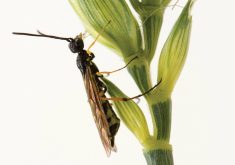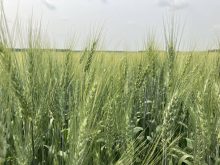Q: How can I successfully manage crop residues?
A: Crop residue management has become a very important agronomic consideration in recent years across Western Canada. Increasing crop yields and plant populations leads to a growing amount of plant material. This plant material will be returned to the soil surface at harvest as crop residue. If not managed properly, crop residues can negatively affect stand establishment in the following year. Strategies to manage crop residue should be multi-faceted and occur at multiple times during the year.
Early in the season, soil testing and accurate fertility recommendations can help prevent the overapplication of fertilizer. This can lead to taller plants that are prone to lodging, can delay maturity and might create tough- to-manage residue. In-season use of plant growth regulators in cereal crops can help reduce plant height and lodging issues. Shorter standing crops can be easier to combine and residue can be more uniformly returned to the field.
Read Also

Cancer agency reclassifies another herbicide ‘probably carcinogenic’
The WHO’s cancer research agency has now put atrazine, a herbicide well known to corn growers, in the same potential-hazard category where the agency put glyphosate.
Crop residue is broken down through microbial activity and the rate of decomposition is directly related to the surface area, or size, of the residue returned to the soil surface.
Dry crops are chopped more finely and are spread farther across the harvested area. Growers should make sure straw choppers and spreaders are in good condition with sharp knives and strong blowers. Using stripper headers to remove the grain and leave straw standing can be another option to conserve moisture over the winter and prevent crop residue from building up on the soil surface.
After harvest, harrowing fields can help to evenly distribute residue and break up clumps and mounds, provided the straw is dry. This field operation helps to increase contact with soil for microbial activity to begin. A last resort in this context would be the removal of residue through baling or burning. Both strategies will remove a large amount of usable plant nutrients and potential organic matter from the field ecosystems that is not easily replaced in a timely or effective manner.
– Jordan Peterson, PAg, CCA, is a manager of agronomic solutions with Nutrien Ag Solutions in northern Alberta.















